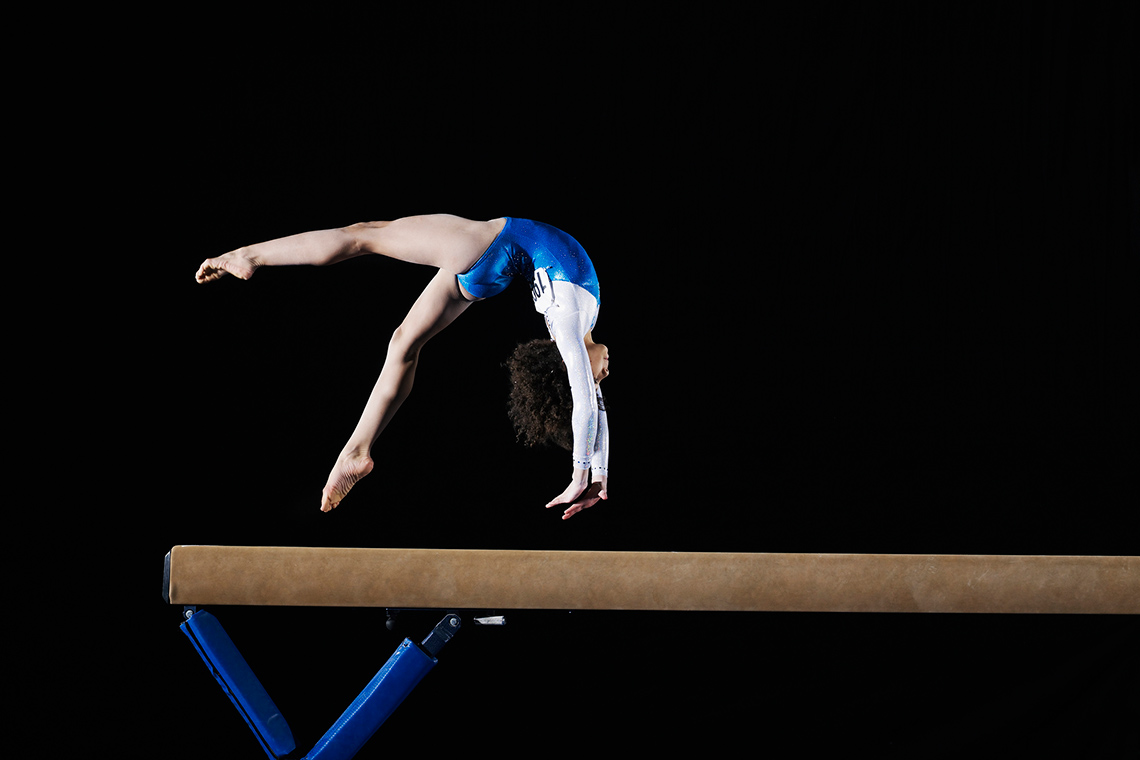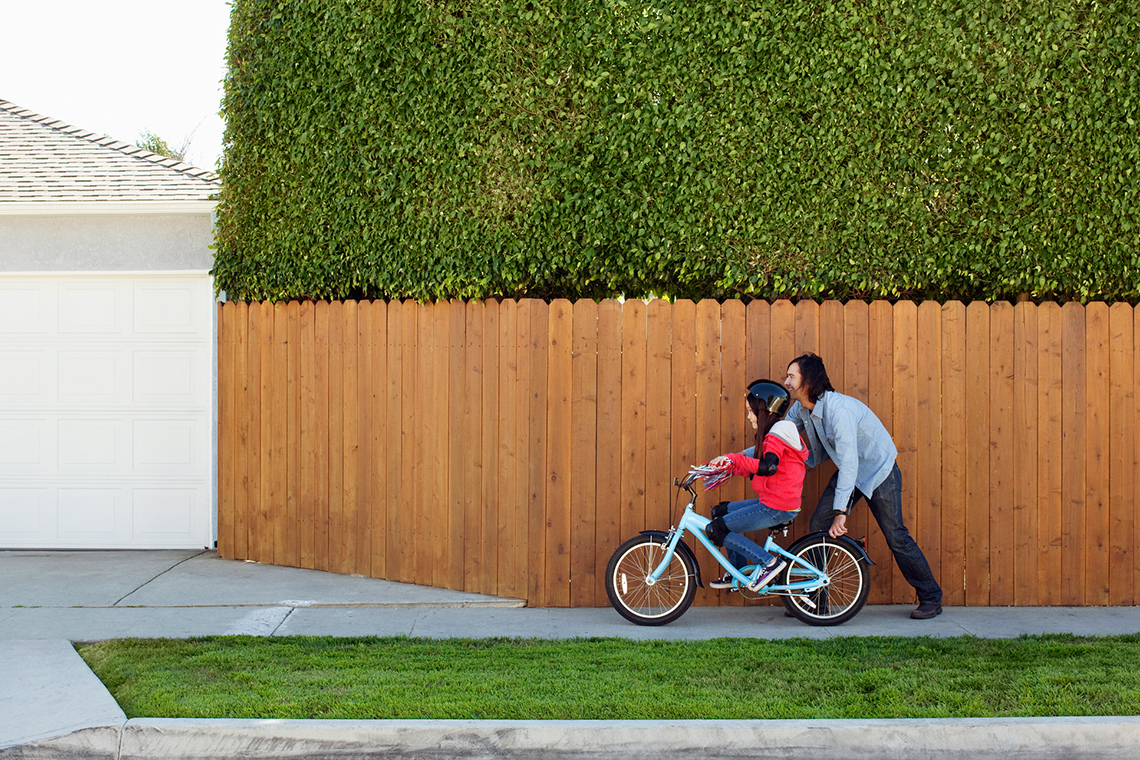Minds On
Movement

Did you know that gymnasts, dancers, athletes, and even animals use balancing, weight transfer, and slow and fast body movements?
They keep their bodies in control. They focus. Their movements are soft and quiet, yet strong.
For this learning activity, we will focus on our balancing, transition, and jumping and landing skills.
Brainstorm
Steady balances and transitions
Brainstorm examples when someone might need to balance, transition and jump. For example, switching from one-foot to two-feet jumps while playing hopscotch.
Reflect on activities you may have participated in, or know of, where either or both skills are used.
Complete the Balance Chart in your notebook or using the following fillable and printable document. If you would like, you can use speech-to-text or audio recording tools to record your thoughts.
Press the ‘Activity’ button to access Balance Chart.
|
Balance Activities |
Both balance and jump and land activities |
Jump and Land activities |
Which one?
For each term select the corresponding illustration.
Action
Balances

Press the following tabs to access types of balances.
Static means not moving. A static balance is holding your body in a position for more than 3 seconds.

A one-point balance would have one body part touching the ground, like a flamingo standing.

A learner doing the tree pose. One of their legs is on the ground and the other leg is bent. Their foot is pressed up against the leg on the ground, close to the knee cap. Their hands are pressed against each other with their elbows bent.
A dynamic balance is when you are moving, but you need to keep your balance so that you don’t fall over. Examples of dynamic balance include: riding a bike, skating, or walking along a line or rope.

But first, let’s warm up!
Safety
Before you begin:
Warm Up
Let’s clap!
Warm ups are simple activities that slowly increase the heart rate and get our muscles and joints ready!
Side-to-side arm claps
- If possible, sit upright with your feet shoulder-width apart.
Option: Or stand straight with your feet shoulder-width apart.
- Then, extend your arms to your shoulder height, with palms facing forward.
- Breathe in, slowly move your left hand to your right hand, and clap! Breathe out as you bring your left hand back to starting position.
- Now, breathe in, move your right hand to your left hand, and clap! Breathe out as you bring your left hand back to starting position.
Repeat steps 2 to 4 for at least a set of 15. Remember to breath in and out!
Types of balances
Explore the following balances.
Let’s review the different types of balances, static and dynamic.
Static balance is a skill where the body maintains a pose in a stable and still position.
Dynamic balance is a skill where the body maintains balance and control while moving around.
Standing or holding a one-point or two-point pose is a static balance skill.
While holding static balances, the muscles, eyes, and head are in a fixed position. An example of this is maintaining a pose during a game of freeze dance.

Dynamic balance is keeping your body in control while moving. While the body is in motion, the body and head are in control. For instance, riding a bike. The rider is pedaling forwards, while the hands steer the bike, their eyes are focused, and their body is balanced.

Try It
Task 1: Let’s hold it!
Try holding a one-point or two-point static balance of your choice.
Always be sure to do your safety checks!
Press ‘Examples’ to access a few sample one-point and two-point static balances.




Here’s the challenge: Don’t focus on one point as you hold your balance. Or, if possible, close your eyes.
Try your best to at least hold the pose for at least 5 seconds.
What do you notice?
Record your thoughts in a notebook or another method of your choice.
Press ‘Let’s check!’ to access a possible answer.
Have you ever noticed that when you move over a bridge or a sidewalk, you need to focus on a single point or an object to help you move without losing your balance?
It is important when balancing, whether static or dynamic, to remain focused on a point or a stationary object.
For example, a point on the wall, a clock, bulletin board, or picture can be used as focus points when balancing.Strategies
Before practising your balances, consider these strategies:
- use your arms as needed to maintain balance
- keep focused
- maintain a steady balance in a variety of poses
- keep a tight (controlled) body
Task 2: Splash!
Always be sure to do your safety checks!
Option 1
Imagine that we need to move across a really large puddle.

Don’t forget to use the strategies that we previously explored to practise our balancing.
Press the following tabs to access the activity.
- tape/chalk/string
- a soft object (beanbag/small stuffed toy/crumpled paper)
- optional: a spoon/spatula/safe utensil to carry object
1. Use tape, chalk, or another method of your choice to create 3 different lines (planks) on a flat ground (straight, curvy, zigzag, etc.). You may have a peer/adult assist you.
2. Move to the starting point of the first line and place your soft object in both or one palm.
3. Balance your object in your palm(s) as you move along your plank. Remember to focus on your balance and your object too!
4. When you are at the edge of your plank (line), hold a static balance pose of your choice with your object. Hold your body still.
Repeat steps 2 to 4 for the two remaining planks (lines).
Challenge yourself: Instead of holding your object in step 3, try and carry your object using a safe utensil, like a spoon or spatula for each or one of your planks (lines).
Option 2
Imagine that we need to move across a plank to the shore.
Don’t forget to use the strategies that we previously explored to practise our balancing.
Press the following tabs to access the activity.
- tape/chalk/string
- a soft object (beanbag/small stuffed toy/crumpled paper)
- optional: a spoon/spatula/safe utensil to carry object
1. Use tape, chalk, or another method of your choice to create 3 different lines (planks) on a flat ground (straight, curvy, zigzag, and etc.). You may have a peer/adult assist you.
2. Balance your object in your palm(s) or in your lap, as you move along your plank. Remember to focus on your balance, and your object too!
3. When you are at the end of your plank (line), hold a static balance pose of your choice with your object. Hold your body still!
Repeat steps 2 and 3 for the two remaining planks (lines).
Challenge: If possible, try and carry your object using a safe utensil, like a spoon or spatula as you move along different planks (lines).
Transitions
There are many movements that can help us in between balances, take off before a jump, or land after a jump. These movements are known as transitions.
There are many different types of transitions between balances.
It could be a jump, letting the body flow and change directions, or even moving other body parts, like the arms, instead of the legs.
Transitions help to control the body when moving from one balance to another.
Consider the following transitions:
Did You know?
Did you know?
Jumping is another transition, with taking off and landing with both feet. You can jump for distance or for height.
Strategies
Before practising your jumping and landing, consider these strategies:
- Bend your knees, and move into a crouch position.
- Swing your arms back.
- Push off from your toes, and jump as high/far as you can.
- Use your arms to pump yourself ahead, and look forward.
- Land softly with your knees bent and both feet on the ground.
- Hold a squat position.
Static transitions
Similar to balances, there are static and dynamic transitions too!
Static transitions are movements that hold a position for a period of time, usually between 20 to 30 seconds.
Explore the following static transitions:
Dynamic transitions
Dynamic transitions are continuous movements that get the body moving in between balances, like running, walking, galloping, and many more.
Check out the following dynamic transitions:
Side Shuffle
Lunge Walk
Skip and Swing
Try It
Task 3: Transition on!
Choose any of the static or dynamic transitions to practise.
Always be sure to do your safety checks!
Provide a follow-up question:
- Do you prefer static or dynamic transitions?
- What strategies did you find the most helpful when practising transitions?
Cool Down
Let’s slow down!
We’ll cool down with a few movements. Remember to take slow and deep breaths, as you allow the heart rate to return to a normal pace.
Climbing the ladder

1. Stand tall with feet slightly apart.
Option: If possible, sit upright with your feet slightly apart.
2. Slowly move your arms or legs up and down as if you were climbing a ladder to the sky.
3. Climb a ladder for 20-30 steps.
Deep breaths and hug

1. Sit upright or stand with your feet slightly apart.
2. Slowly take a deep breath in through the nose and out through the mouth. Repeat three times.
3. Wrap arms around shoulders and give yourself a big hug and a pat on the back.
Consolidation
Learning check!
For each term select the corresponding image.
Creating a routine
Let’s design and create a routine demonstrating your static and dynamic balances, transitions, and jumping and landing skills.
Be sure to include the following components in your routine!
Complete the Routine Planner in your notebook or using the following fillable and printable document. If you would like, you can use speech-to-text or audio recording tools to record your thoughts.
Press the ‘Activity’ button to access Routine Planner.
|
My routine name: |
|
|
Starting pose: |
|
|
My routine: |
|
|
Ending pose: |
|
|
Equipment (optional):
|
|
After designing your routine, safely try it! If possible, share your routine with a peer/adult.
Always be sure to do your safety checks!
Then, respond to the following questions:
- What parts of your routine do you like? Why?
- Which parts would you like to change after trying it?
- How would you change the routine?
Record your ideas in a notebook or another method of your choice.
Reflection
How do you feel about what you have learned in this activity? Which of the next four sentences best matches how you are feeling about your learning? Press the button that is beside this sentence.
I feel…
Now, record your ideas about your feelings using a voice recorder, speech-to-text, or writing tool.
















